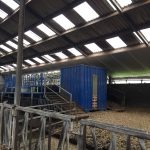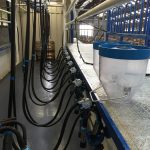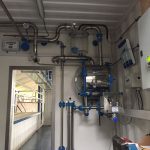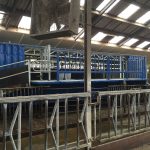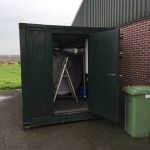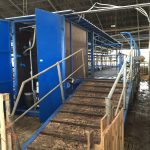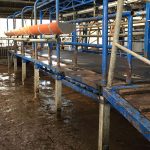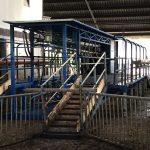Cows and Crops: Dairy Systems…Always Changing
By Rick Kersbergen, Extension Professor, University of Maine Cooperative Extension, richard.kersbergen@maine.edu
 So my visit to the Netherlands has been an education for the scared traveler from Maine. Not only have I experienced driving in Holland, but have witnessed some of the worst traffic jams I have ever seen—but no scared selfies from me, just lots of dairy barn pictures. Finding out that it costs €.50 to go to the bathroom at a rest area might also change my addiction to excessive morning coffee.
So my visit to the Netherlands has been an education for the scared traveler from Maine. Not only have I experienced driving in Holland, but have witnessed some of the worst traffic jams I have ever seen—but no scared selfies from me, just lots of dairy barn pictures. Finding out that it costs €.50 to go to the bathroom at a rest area might also change my addiction to excessive morning coffee.
As part of my work on this trip, I am investigating some possible milking systems that might be able to be used in Wolfe’s Neck Farm new organic dairy teaching and research facility as the first phase of the project begins.
Today I was fortunate to visit with Europe Dairy Systems as they took me around to visit farms that are using their “Mobistar” system of portable parlors. I was lucky to also go with Alfonso Lago from DairyExperts in Tulare California on these visits. (Small world: Alfonso recently did some research with Pete Erickson from UNH with whom I went to graduate school at University of Maine.)
Traveling in the Netherlands (or Nederland as the Dutch prefer) on a Friday is a new experience. It seems that weekends begin at noon on Fridays and traffic on the highways comes to a crawl. So instead of visiting three farms today, we only made it to two.
The first farm we visited was an organic farm, or “biologic” farm as it is referred to in Europe, in Ooltgensplaat. This farmer was able to rent 150 cows, and move the new parlor into place in his barn in just a few days. The parlor was easily moved into his existing barn as a single unit and another shipping container held the bulk tank. Basically, it was a “hook up water and plug it in” system! He currently milks about 150 Jersey cows and cleans up the parlor chores in about 2 ½ hours! The most difficult part of the whole installation was teaching the cows to walk up the ramp to the parlor.
The second farm we visited was in a beautiful town called Casteren. This was a conventional 150 cow freestall operation that is interested in switching away from a 3-robot milking system purchased several years ago. They have been increasingly disappointed with the performance of the robots. Using the mobile parlor will give them a chance to try out a parlor system to see if that will be the better option for milking their cows in the future. It is a situation like this that farmers in Maine who are considering robots might need to evaluate before they invest several hundred thousand dollars for robotic milking equipment.
We came on the fifth milking after they had switched from the robots and milked their cows in the mobile parlor they are renting from Europe Dairy Systems. The first milking took four hours, but by the fourth milking, they were down to two hours! When we were there, the cows were waiting at the gates to come get milked! Such a big change is tough on cows (they are unique creatures of habit — change is not a good thing for dairy cows!), but the farm was only down a couple of hundred pounds of milk through the first four milkings.
By being able to use the milking parlor on a rental basis, they can decide if they want to abandon the robot system and construct a facility that can more permanently house a milking parlor.
Tomorrow I head off to visit farms with a retired Dutch Extension Agent named Gidi Smolders…my travels continue!


